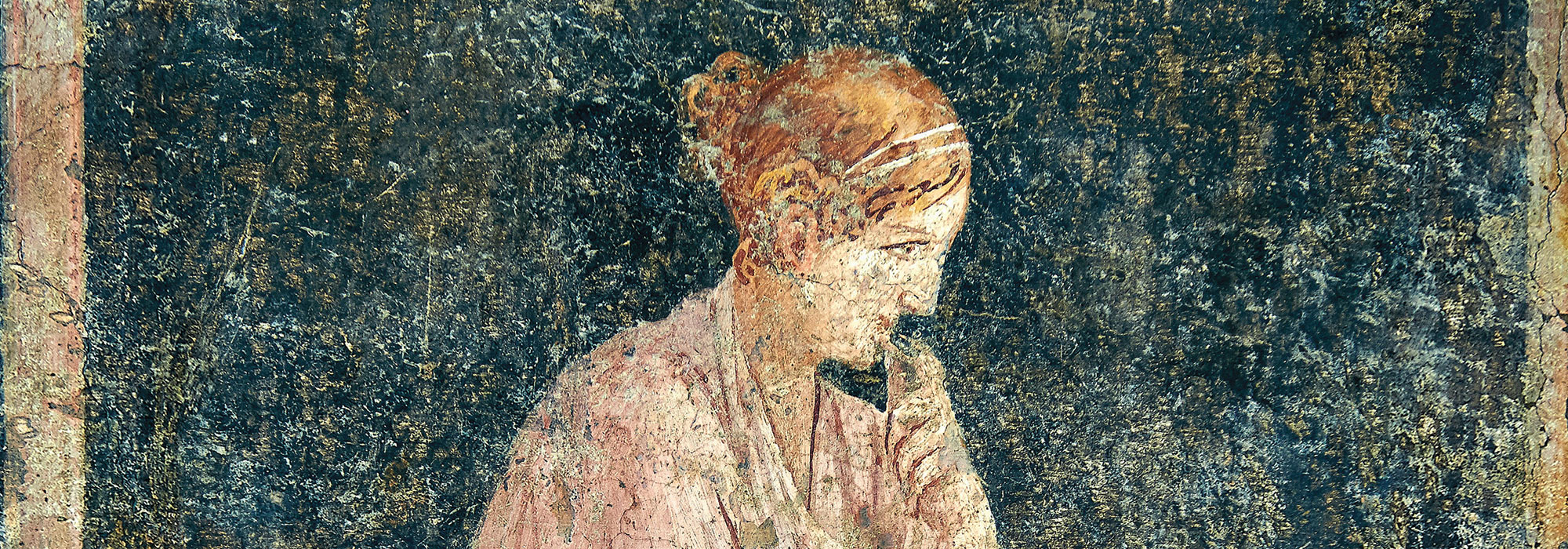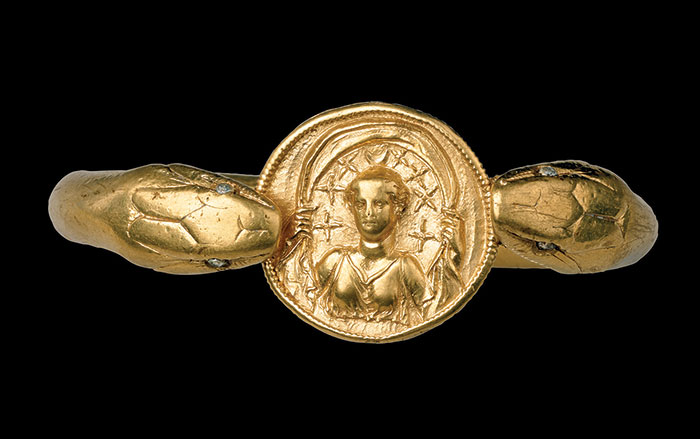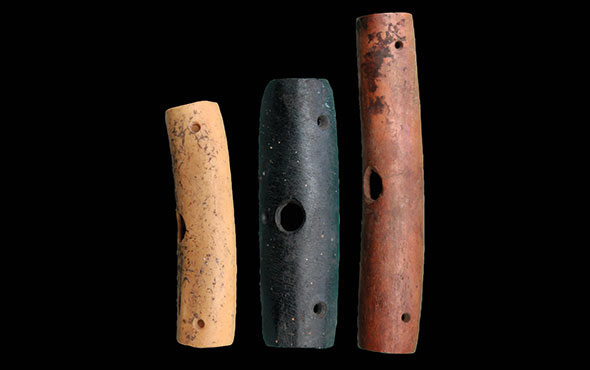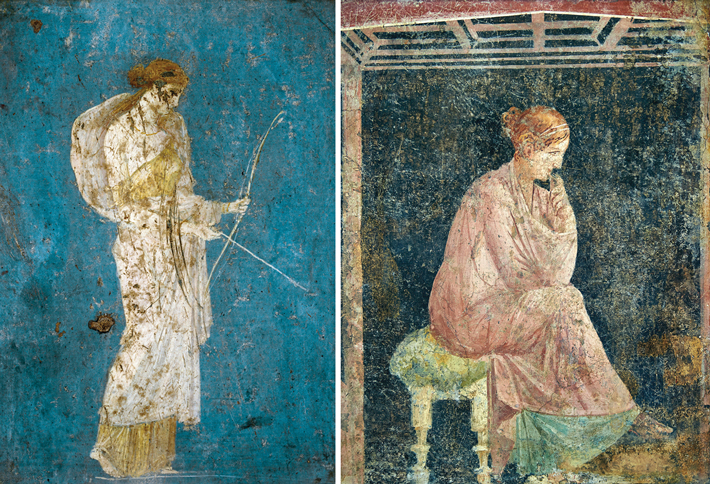
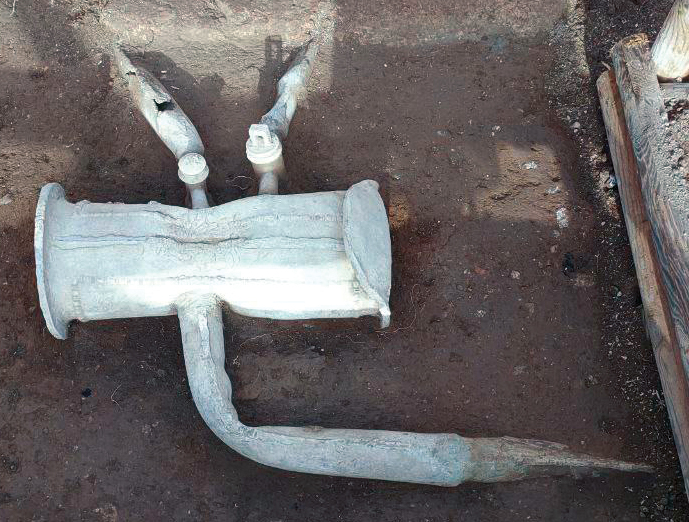
As they strolled through a colonnaded peristyle shaded from the blazing sun or admired the stunning frescoes covering the walls of their opulent home, the residents of the Villa Arianna would have prized their view of Mount Vesuvius not too far in the distance. But the volcano would ultimately cause their demise, as the same eruption that engulfed Pompeii in A.D. 79 also buried the villa, which once covered some 27,000 square feet and contained dozens of rooms and lush gardens. While reexcavating in one of the villa’s small peristyles, a team from the Archaeological Superintendency of Pompeii recently uncovered a perfectly preserved, decorated lead water tank and several pipes that had been part of the residence’s state-of-the-art water supply system. The tank would have remained at least partially aboveground to allow access to two shut-off keys used to regulate the flow of water throughout the property.
The Romans are well known for water management on a grand scale, most notably the miles-long arched aqueducts that supplied the city of Rome as well as much of their vast empire. They also excelled at managing water for domestic use, especially in luxury estates such as the Villa Arianna, where running water, copious fountains, swimming pools, and private baths were de rigueur.


